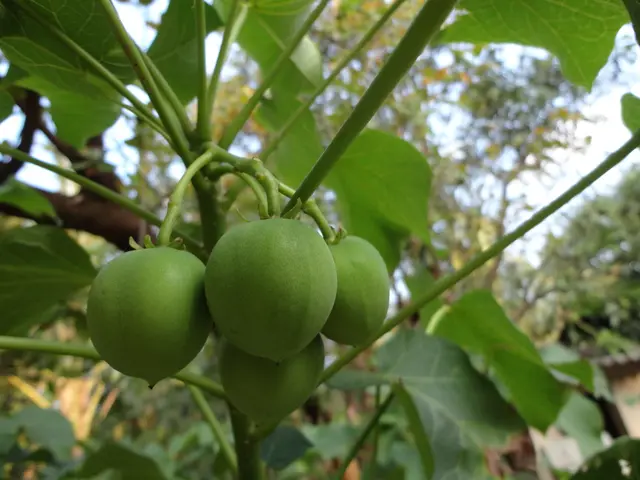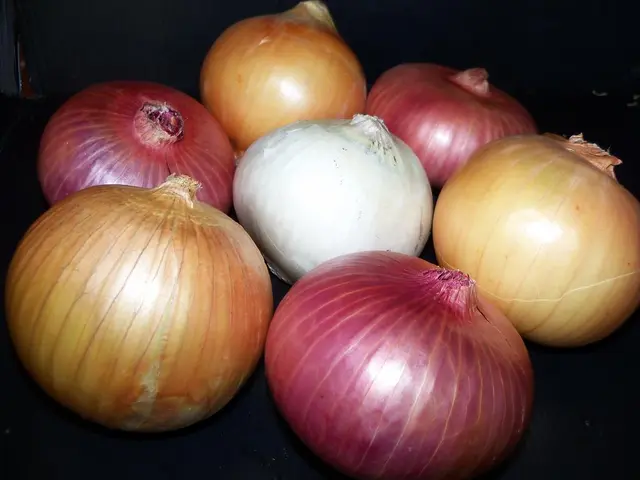Garden Care Shifts: Implications for Your Green Space Post La Niña's Departure
Why Does the Weather Fluctuate So Much? Let's Talk El Niño-Southern Oscillation (ENSO)!
Got the gardening blues? Feeling puzzled why one year your tomatoes thrive while the next leaves you high and dry? You're not alone! Master Gardeners and agricultural experts hear this question frequently.
The fickle weather vexes even the most dedicated green thumbs, but there's a puppet master behind this chaotic stage: El Niño-Southern Oscillation, or ENSO.
Hey there, ENSO! What's that?
This El Niño-Southern Oscillation isn't some character from a Disney film. It's a climate pattern that pulls the strings on many of our seasonal weather patterns. Whether it's the number of hurricanes, the severity of droughts, or farmland floods, ENSO's influences are widespread.
ENSO mimics a three-act dance, shifting between El Niño (warm temperatures), La Niña (cool temperatures), and the ENSO-neutral phase (average temps between the two). Sea surface temperatures in the east-central Tropical Pacific drive ENSO's movements.
Now, When's the Big Show in 2025?
So, what's the forecast for 2025, you ask? The National Oceanic and Atmospheric Administration (NOAA) announced that La Niña officially emerged in December 2024. Keep in mind, though, it's a La Niña that's not exactly expecting a standing ovation. Many experts warned that this La Niña was bound to be short-lived [1].
Given La Niña's anticipated weakness this past winter, weather forecasters from NOAA are leaning toward a shift from La Niña to ENSO-neutral [2]. However, remember that ENSO-neutral isn't always a guarantee of mild weather. Some of the worst droughts, floods, and hurricane seasons have occurred during ENSO-neutral years, as climate change and regional factors become the dominant weather drivers.
Now, Let's Talk Regions!
Southern U.S.
La Niña is known for warmer and drier conditions, which have held true for the southern U.S. so far [3]. As La Niña fades, concern grows that ENSO will offer little reprieve for those areas. The southern states may remain locked in a dry, heatwave-prone weather pattern, increasing agricultural stress and exacerbating early-season drought.
Pacific Northwest and Mountain West
Typically, La Niña would mean cooler, wetter conditions for the Pacific Northwest and parts of the Mountain West. As La Niña wanes, these wet trends may follow suit. Spring should still be moist and pleasant in the Pacific Northwest, but summer could veer towards average or even warmer temperatures. The Mountain West might dry out and warm up, particularly in the southern regions.
Midwest and Northeast
ENSO's influence in these regions tends to be weaker and less consistent. Despite this, transitional ENSO years might bring above-average warmth, erratic rainfall patterns complicating growing seasons, and an increased risk of severe weather in the Central Plains [4].
But What Does This Mean for My Garden?
In the upcoming season, it's best to prepare for the unexpected. The shift from a weak La Niña to ENSO-neutral could bring a mixed bag of weather-related surprises. To help your garden weather these unexpected conditions, consider building resilience by:
1. Focus on Soil Health
Investing in your soil health is vital. The University of Maryland recommends continually amending soil by adding organic matter such as compost, aged manure, or worm castings to support a better soil ecosystem [5].
2. Plant Smart
Choose native plants and perennials known for their hardiness to weather extremes. Opt for crops labeled "heat-tolerant", "drought-resistant", or "disease-resistant" for added resilience.
3. Conserve Water
Invest in efficient watering systems such as drip irrigation, soaker hoses, or automatic watering systems. Low-tech options include Ollas, historically used in arid regions to keep plants hydrated.
4. Create a Storm-Proof Haven
Protect your plants from temperature swings, hail storms, or pests with portable covers, frames, tunnels, or apply a heavy mulch layer.
So there you have it! Prepare yourself for an unpredictable gardening season by adopting weather-resilient gardening practices. Remember, climate change allows us to try new techniques, embrace seasonality, and plants are resilient.
Interested in boosting your garden's defense? Check out our suggested steps for a stronger, weather-ready garden.
Sources:[1] https://www.wmo.int/en/media/news/warmer-than-average-pacific-ocean-expected-prevail-until-june[2] https://www.ncdc.noaa.gov/sotc/global/202501[3] https://www.wmo.int/en/media/news/worldwide-climate-update-regional-heatwaves-and-droughts-expected-continue[4] https://www.accuweather.com/en/weather-forecasts-and-warnings/2025-forecast/865036[5] https://extension.umd.edu/resource/amending-your-soil-process-continuous-improvement[6] https://ag.cornell.edu/extension/vegetableipm/disease-resistant-varieties[7] https://extension.arizona.edu/blog/ollas-clay-pots-help-keep-plants-hydrated[8] https://mortonarb.org/our-work/conservation/climate-and-the-garden/building-climate-resilient-garden
- The El Niño-Southern Oscillation (ENSO) influences various seasonal weather patterns, affecting the number of hurricanes, droughts, and farmland floods.
- This climate pattern follows a three-act dance, shifting between El Niño (warm temperatures), La Niña (cool temperatures), and the ENSO-neutral phase (average temperatures).
- In gardening, focusing on soil health is crucial for building resilience, as investing in organic matter can support a better soil ecosystem.
- Choosing native plants and perennials known for their hardiness to weather extremes can help your garden weather unexpected changes in the climate.
- Conserving water is essential, and investing in efficient watering systems can help maintain a healthy garden during periods of drought.
- Protecting plants from temperature swings, hail storms, or pests with portable covers, frames, tunnels, or a heavy mulch layer can also be beneficial in unpredictable weather conditions.
- Adopting weather-resilient gardening practices can help prepare for an unpredictable gardening season, embracing seasonality, and planting organic vegetables to contribute to a sustainable lifestyle in the face of climate change.








